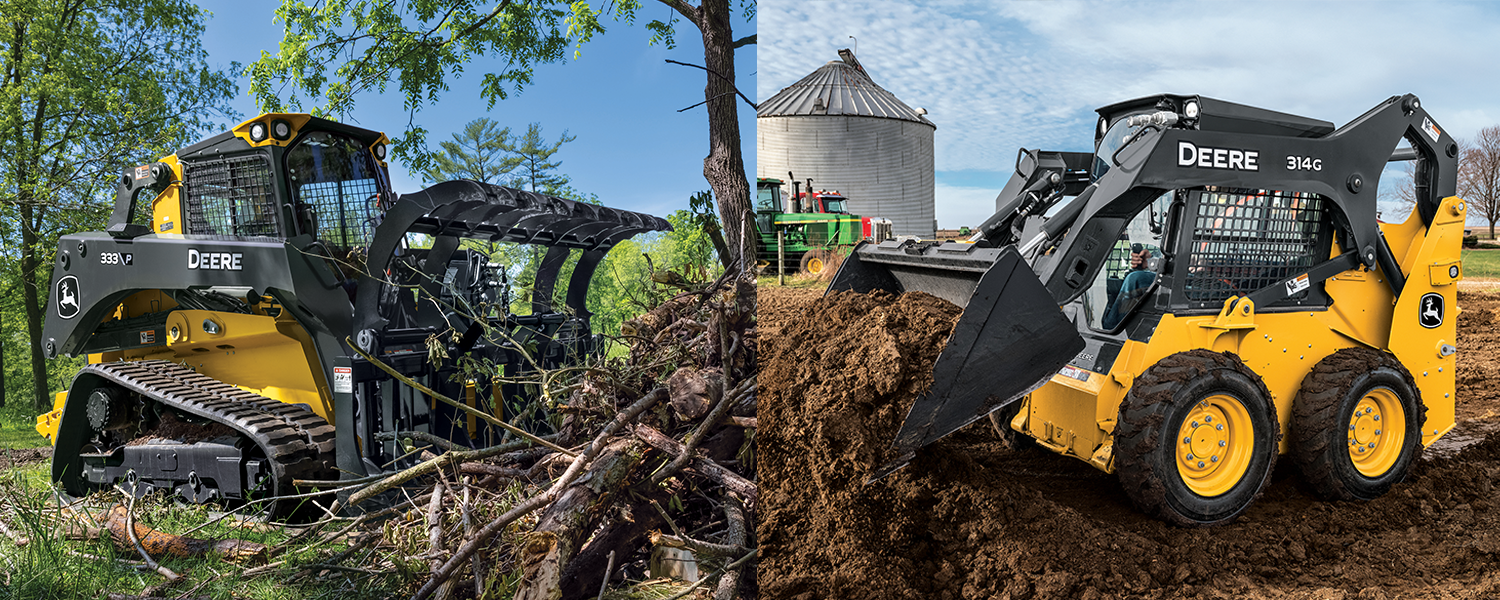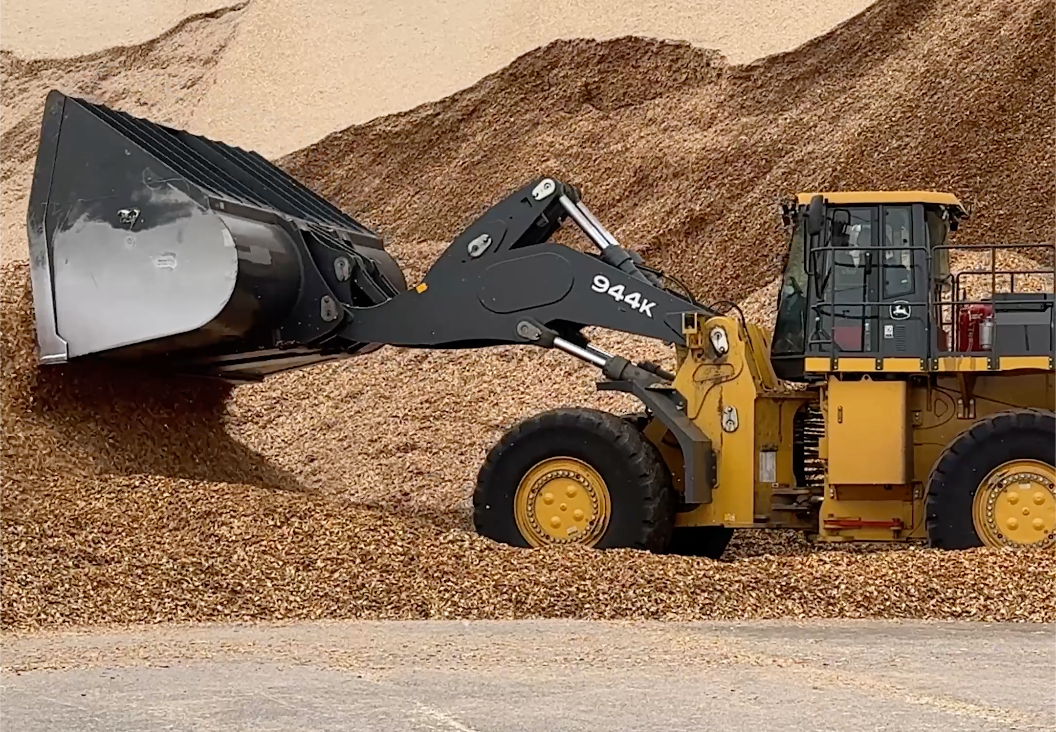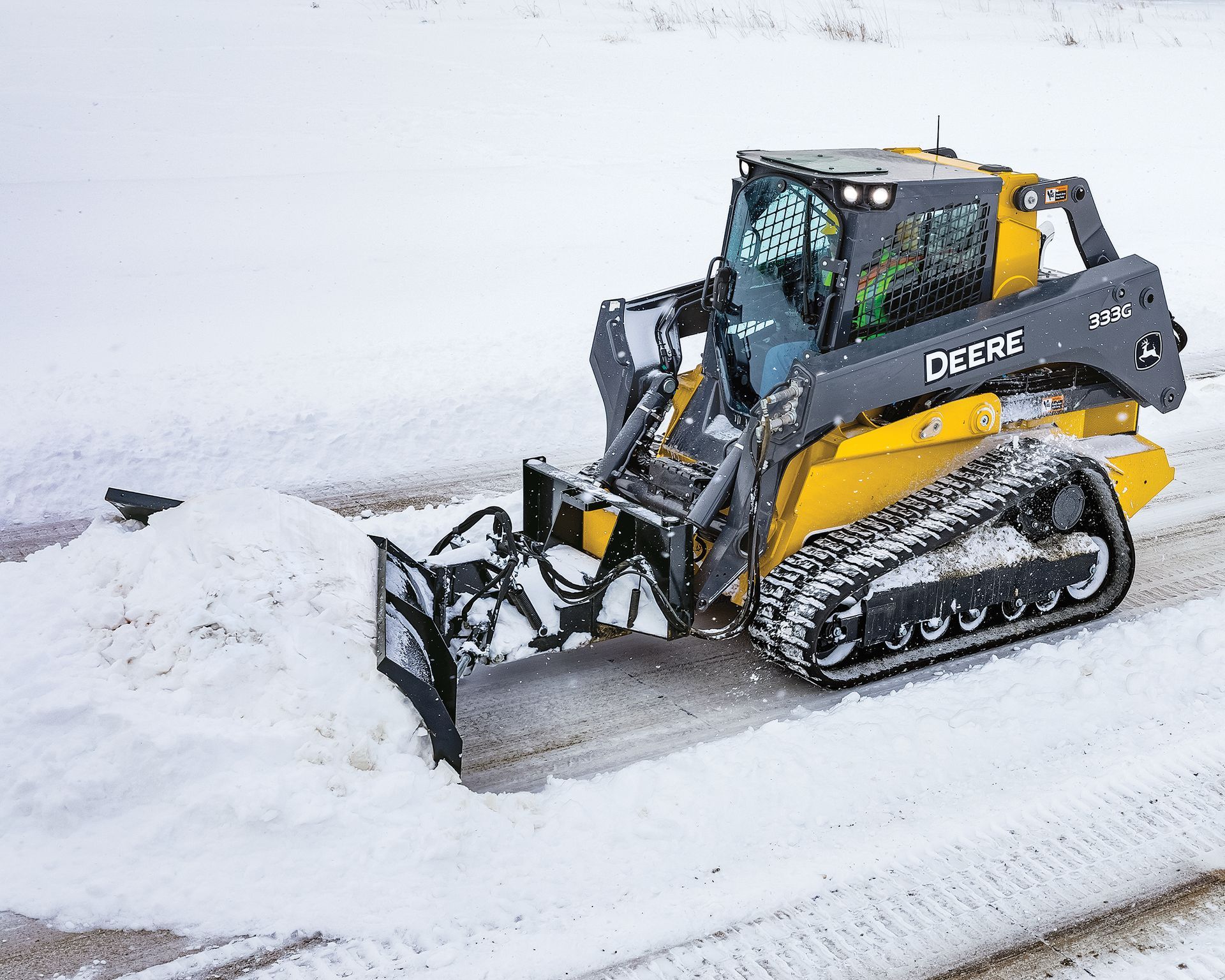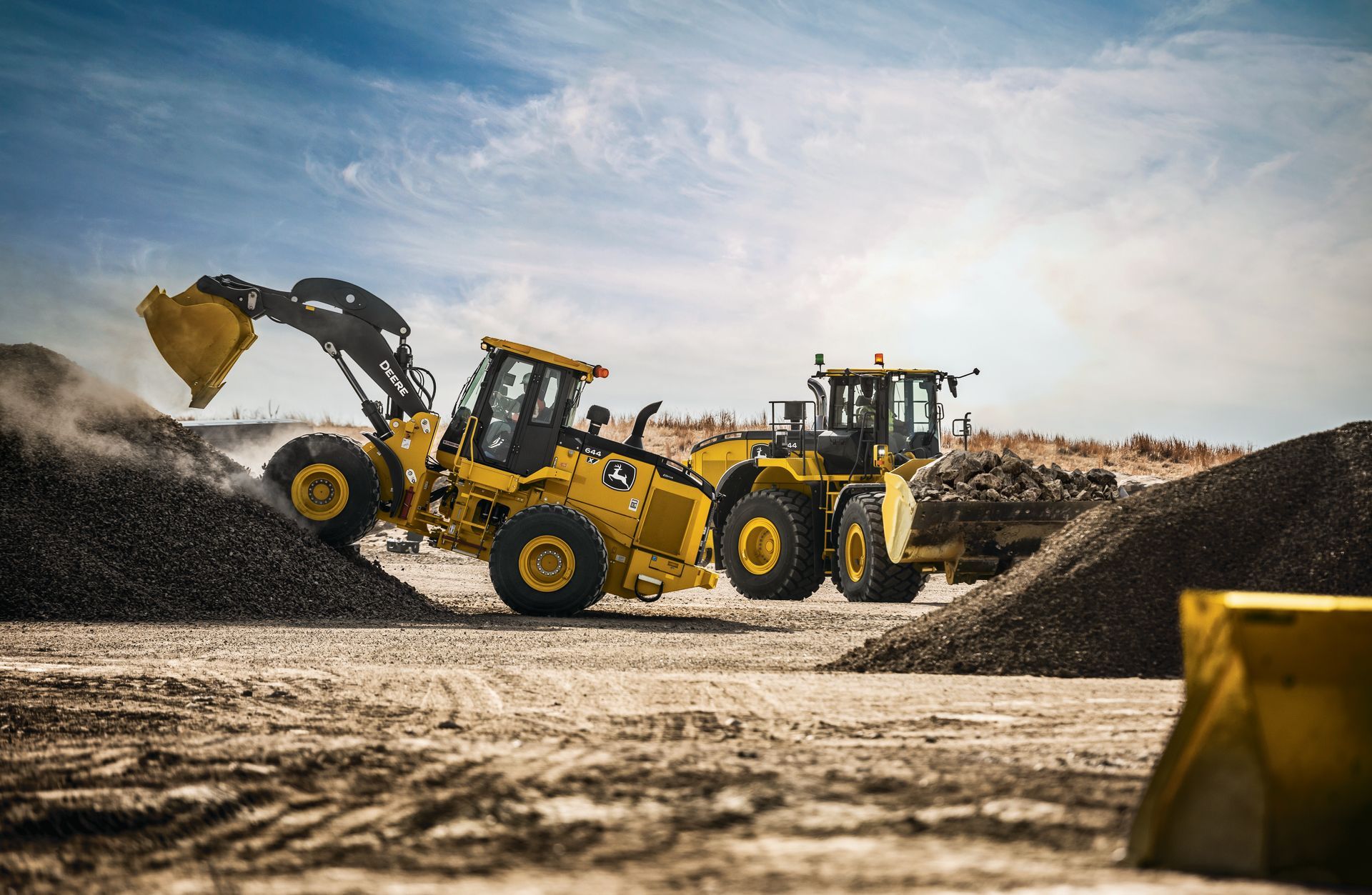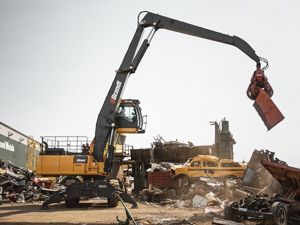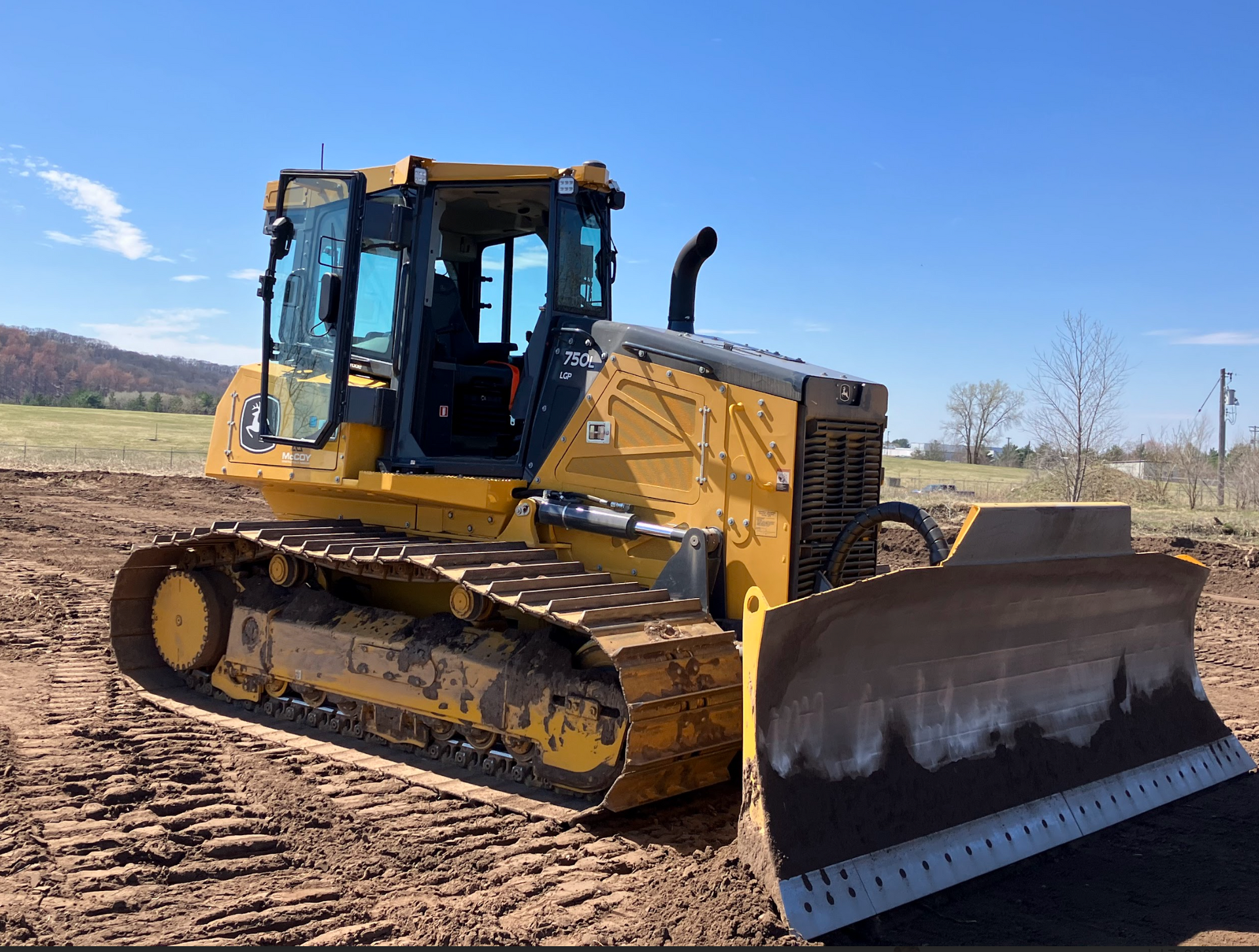Choosing the right machinery for your projects is crucial to maximizing productivity and efficiency. Understanding the differences between skid steers and compact track loaders can significantly impact your project's success.
Both types of equipment offer distinct advantages; knowing which one best suits your needs is essential. In this skid steers vs. track loaders head-to-head comparison, we will explore the features, capabilities and applications of skid steers and compact track loaders.
At McCoy Construction & Forestry, we are proud to offer top-notch John Deere equipment to meet the demands of any job. Join us as we break down these powerful machines to help you make an informed decision.
Understanding Skid Steers
Skid steers are compact, versatile pieces of construction equipment featuring a rigid frame and a unique wheeled design, allowing for superior maneuverability. Equipped with a powerful engine and a range of attachments, skid steers can handle various tasks on job sites, making them essential tools for contractors, landscapers, and farmers alike.
Key features of skid steers include a robust hydraulic system that enables the operation of various attachments, from buckets to augers. They typically have a rated operating capacity (ROC) ranging from 1,000 to over 3,000 pounds, making them suitable for heavy lifting and digging tasks. Additionally, skid steers come in wheeled or tracked configurations, allowing users to choose the best option based on their specific terrain and project requirements.
Skid steers are commonly used in a wide array of applications. They excel in landscaping tasks such as grading and clearing land and are invaluable on construction sites for digging, lifting, and transporting materials. Their agility makes them perfect for tight spaces, while their ability to switch attachments quickly allows operators to perform multiple tasks without needing additional equipment.
Exploring Compact Track Loaders
Compact track loaders are versatile pieces of heavy machinery that combine the functionality of skid steers with the added benefits of tracks instead of wheels. This design allows for superior traction, stability, and flotation on uneven or soft surfaces, making compact track loaders ideal for various applications in construction, landscaping, and agriculture.
One of the primary advantages of compact track loaders is their ability to operate in challenging terrain. The tracks distribute the machine's weight more evenly, reducing ground pressure and enabling it to travel through muddy or sandy conditions. Loaders also often feature higher lifting capacities and improved visibility, enhancing operator safety and efficiency. However, compact track loaders can be heavier and may have a higher initial purchase price compared to their wheeled counterparts. They may also require more maintenance due to the complexity of their track systems.
Typical uses for compact track loaders include grading, excavation, and material handling. They excel in tasks such as site preparation, where their ability to navigate tight spaces and rough terrain is invaluable. Landscapers often rely on compact track loaders for tasks like moving soil or mulch, while construction professionals use them for lifting and transporting heavy materials.
Comparing Skid Steers and Compact Track Loaders
When deciding between skid steers and compact track loaders, understanding the key differences in design and functionality is essential. Skid steers are typically more compact and agile, making them ideal for tight spaces and urban job sites. They feature a rigid frame and use wheels for movement, providing excellent maneuverability. In contrast, compact track loaders are built with tracks, offering superior traction and stability on uneven terrain, making them better suited for landscaping and construction projects on soft or wet ground.
Performance capabilities also vary between the two. Skid steers can often achieve higher speeds and are more efficient on firm surfaces like concrete or asphalt, while compact track loaders excel in challenging conditions where traction is crucial. However, the additional weight of track loaders may limit their speed but enhances their lifting capabilities, allowing them to handle larger loads.
Choosing the right machine depends on the specific tasks at hand. If your job involves lifting and transporting heavy materials on a construction site, a compact track loader would be more beneficial. For tasks requiring quick maneuvers in confined spaces, such as interior demolition or site cleanup, a skid steer would be the better option.
Choosing the Right Equipment
Selecting between skid steers and compact track loaders involves several factors to ensure you make the right choice for your project. First and foremost, assess the type of terrain you'll be working on. Skid steers excel on hard surfaces and in tight spaces, while track loaders offer superior stability and traction on soft or uneven ground. If your worksite frequently changes, a compact track loader may provide the versatility needed to adapt to varying conditions.
Budget is another critical consideration. While the initial purchase price of a skid steer might be lower than that of a track loader, conducting a long-term cost analysis is essential. Track loaders often require less maintenance over time due to their robust design, which can translate into long-term savings.
Evaluating your project needs is crucial. Identify the specific tasks you'll be performing and the attachments required. If your work involves heavy lifting or moving significant loads over rough terrain, a compact track loader might be the better choice. For projects that require agility and precision in confined areas, a skid steer is likely more suitable.
Reach out to your local McCoy Construction & Forestry dealership for help to determine which machine provides the best fit for you. Our team of experts can help you navigate the decision-making process to ensure you get a machine that is not only built to last, but gets the job done.

